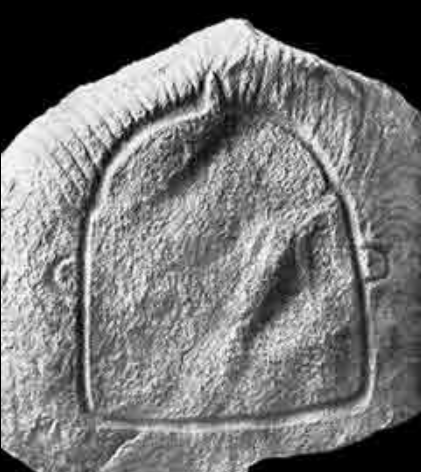- Home
- Discover the megaliths of Morbihan
- Art reflects the sacred
- Rock art
- The shield
The large "shield" motif at Ile-Longue is the only one displaying all the characteristics of the symbol : beak, shoulders, loops and "hair".
The large "shield" motif at Ile-Longue is the only one displaying all the characteristics of the symbol : beak, shoulders, loops and "hair".
One of the most common motifs is the one referred to as the 'shield'. This can appear in a great variety of forms.
The 'shield' is a more or less quadrangular or lancet-like cartouche, to which various elements like a top 'beak', lateral 'loops', spreading 'hair' or 'shoulders' can be added. Sometimes, as at Ile-Longue for instance, the 'shield' can have a very elaborate shape.
The motif can be found alone or in close association with other symbols like the crosier, the horn-shaped motif or the handled axe.
The 'shield' was a perennial ornamental motif. The first 'shields' appeared at the very beginning of Armorican megalithic art. Evolved forms of the motif could still be found in Gavrinis, in the Pierres-plates, and even later on, in Late Neolithic art (e.g. Roudouallec).
This motif could be the most elaborate representation of the 'Mother Goddess', an anthropomorphic figure controlling life and death, found in the Near East during the Early Neolithic. Although the 'shield' clearly portrayed a female figure in many regions, the Armorican version of the symbol seems to have lost all its female attributes.

